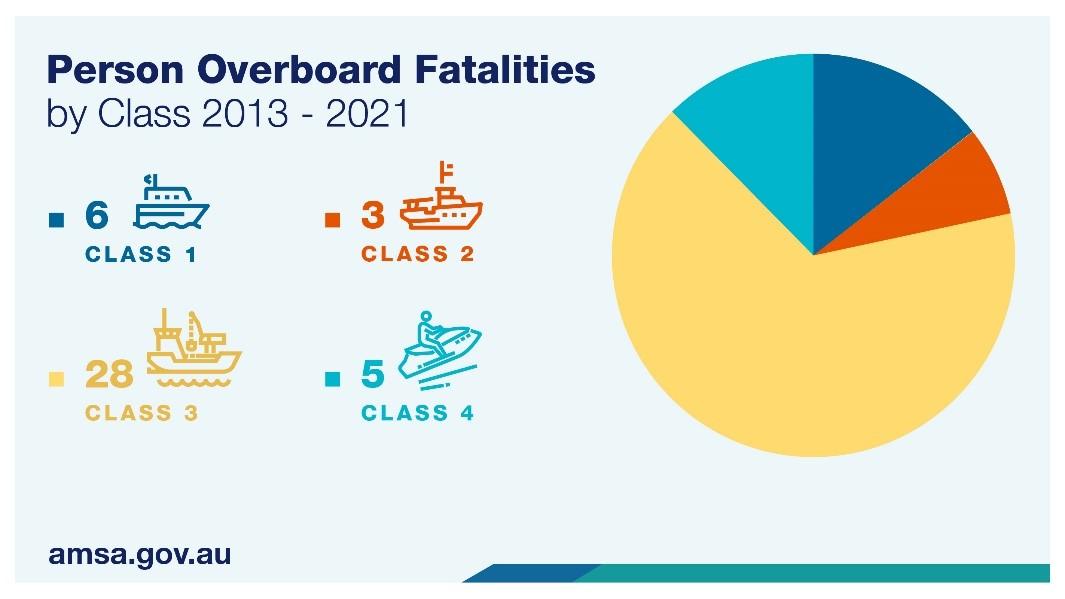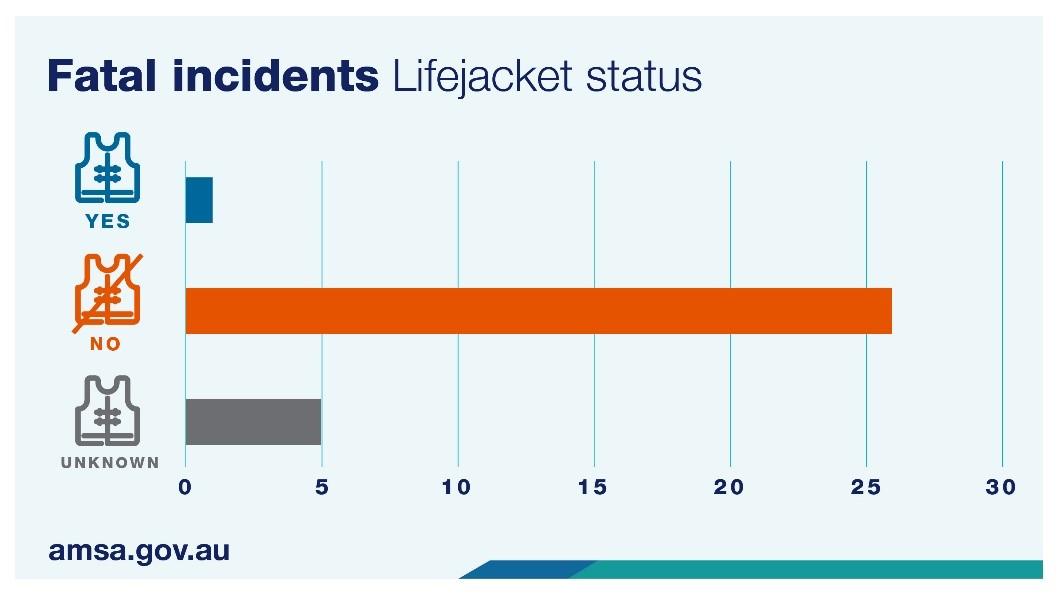- Why are you asking us what we think? Hasn’t AMSA already decided?
The purpose of the current consultation is to gather initial feedback on possible approaches to improving safety by mandating lifejacket wear in certain circumstances. It is not a proposed policy position. AMSA will develop a proposed policy position following this consultation, taking into account all feedback received.
As stated in the consultation paper, once we have carefully analysed all feedback received and developed a proposed policy position; we will consult with industry again on the potential regulatory changes. We plan to do this in the first half of 2022.
- Why is my feedback important to the consultation process?
AMSA strives to improve safety by developing safety regulations that are practical and relevant for industry. To do this, feedback from industry is essential. It is important you provide feedback during this period of public consultation, including feedback on the safety issue, options to address the issue, and the benefits and barriers of the options proposed.
Explaining the reasoning behind your opinion on the options will also provide us with real life experiences. For example, if you agree or don’t agree with what we propose, tell us why. If you agree in part, tell us what you would change. We would like to hear the views and experiences of domestic commercial vessel operators and crews.
- Why are we considering mandatory wearing of lifejackets? Are the statistics that bad?
We are trying to reduce the number of fatalities that have occurred due to people falling overboard domestic commercial vessels. In 2020 alone there were four fatalities, all involving a crew member going overboard. In each of these incidents none of the people who lost their lives were wearing a lifejacket. The graphs below outline the class of domestic commercial vessel in which the fatalities have occurred since 2013 and the lifejacket status for each of the fatal incidents.


Despite AMSA continuing to educate on circumstances where lifejackets can improve safety, fatalities continue to occur where a person has fallen overboard and drowned.
In states such as Tasmania and Victoria where lifejackets have been mandated for vessels less than six metres in length (Tasmania) and 4.8 metres (Victoria) significant decreases in fatalities have occurred. Since the intervention in Tasmania in the early 2000s, subsequent incident data shows a decrease in fatalities from 3.5 to 1.67 annually. Since Victoria introduced mandatory wear requirements in 2014, they have seen a decrease in fatalities from 9.8 to 3.2 annually.
- How am I supposed to work in a bulky and uncomfortable lifejacket?
Advancements in lifejacket design mean there are now many lifejackets available on the market that meet the technical specifications in the National Standard for Commercial Vessels (NSCV) and are more fit for purpose. This provides greater choice when buying a new lifejacket or replacing an existing one.
The range of lifejackets now available increases the likelihood of finding a lifejacket suitable for specific vessel operations. They are generally small, less restrictive and light weight compared to older style lifejackets. Examples include yoke and waistbelt style lifejackets.
For more information on some of the different types of lifejackets available, visit lifejackets.org.au. We also recommend that you contact your local lifejacket supplier to discuss the different styles available that meet your individual operational requirements and the specifications in the NSCV.
- Does wearing a lifejacket pose an increased risk of entanglement and hook ups with other equipment such as fishing nets and lobster pots?
Some stakeholders have identified the risk of entanglement or hook ups with other equipment on the vessel, such as fishing nets and lobster pots, as a barrier to wearing a lifejacket.
Several studies and trials have been conducted around the world regarding the practicality of wearing a lifejacket when performing duties on a domestic commercial vessel. You can find more information on these trials via the links below:
- Maritime Safety Queensland – Lifejacket Trial 2009
- The Marine Accident Investigation Branch outlines a number of lifejacket trials that have been conducted in other countries such as the United States in their lifejacket review (PDF 741 KB).
- AMSA lifejacket trial in North Queensland
We welcome your feedback on this issue. If you have experienced an entanglement or hook up situation due to wearing a lifejacket on a domestic commercial vessel you can report this as a marine incident at Report a marine incident.
- If lifejackets are made mandatory, will I need to wear a lifejacket when wearing a wetsuit?
We welcome your feedback as to whether you believe wearing a wetsuit may be a suitable alternative to wearing a lifejacket for a particular operation and why.
Full body wetsuits provide a degree of buoyancy and thermal protection. However, according to survivability expert, Dr. Paul Luckin, wetsuits do not provide the same level of buoyancy and protection as a lifejacket. Also, a brightly coloured lifejacket is also far easier to detect for search and rescue purposes compared to a wetsuit.
- Will I be required to carry any additional lifejackets under the new proposal?
The requirement to carry a lifejacket for 100% complement (plus child size lifejackets where stipulated) under Chapter 5 of Part C7A of the NSCV, will not change.
Domestic commercial vessel owners or operators may choose to purchase additional lifejackets that are more modern and comfortable, if the ones currently being carried on the vessel are not suitable to wear for extended periods of time.
- What is the definition of ‘deck’ for the purpose of this consultation?
We have not defined ‘deck’ for the purpose of this consultation. Instead, we are seeking stakeholder views about what the proposal would mean for them, based on their vessel’s configuration and operation.
- How do the proposed approaches in the consultation apply to passenger vessels?
The domestic commercial vessel fleet is diverse and no one size will fit all. This is why we are asking for your input and have included three broad proposals covering the full spectrum of possible approaches to mandating lifejackets.
Proposal 1 covers mandatory lifejacket wear on all domestic commercial vessels, including ferries and other passenger vessels, at all times, when on deck. This option could include wear requirements for both crew and passengers.
- Isn’t it better to stop people falling overboard in the first place?
Yes, however due to the nature of some operations, it is not possible to remove the risk of falling overboard completely. For example, commercial fishers often perform duties over the side of the vessel where the risk of falling overboard is heightened. This could include deploying pots or nets and other tasks that are not practicable to perform any other way. Where it is not feasible to remove the risk of a person falling overboard, the wearing of a lifejacket will increase the chance of survival if a person does find themselves in the water.
- Why would I need to wear a lifejacket in good weather?
Severe weather, heavy seas and reduced visibility are heightened risk factors for person overboard events. However, incidents still occur during calm conditions. There have been several drowning fatalities in the past that have involved people going overboard during good weather conditions. These are documented in the coronial findings included in the consultation paper.
Although no decisions have been made on whether a lifejacket will be required based on particular environmental factors, it is important to note that an incident which results in a person unexpectedly ending up in the water can occur at any time and without warning. Having a lifejacket on will significantly increase survivability if this does occur.